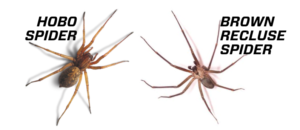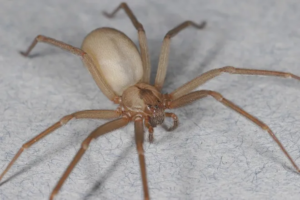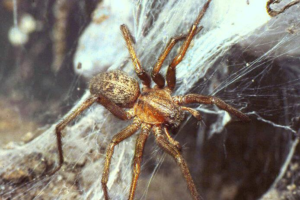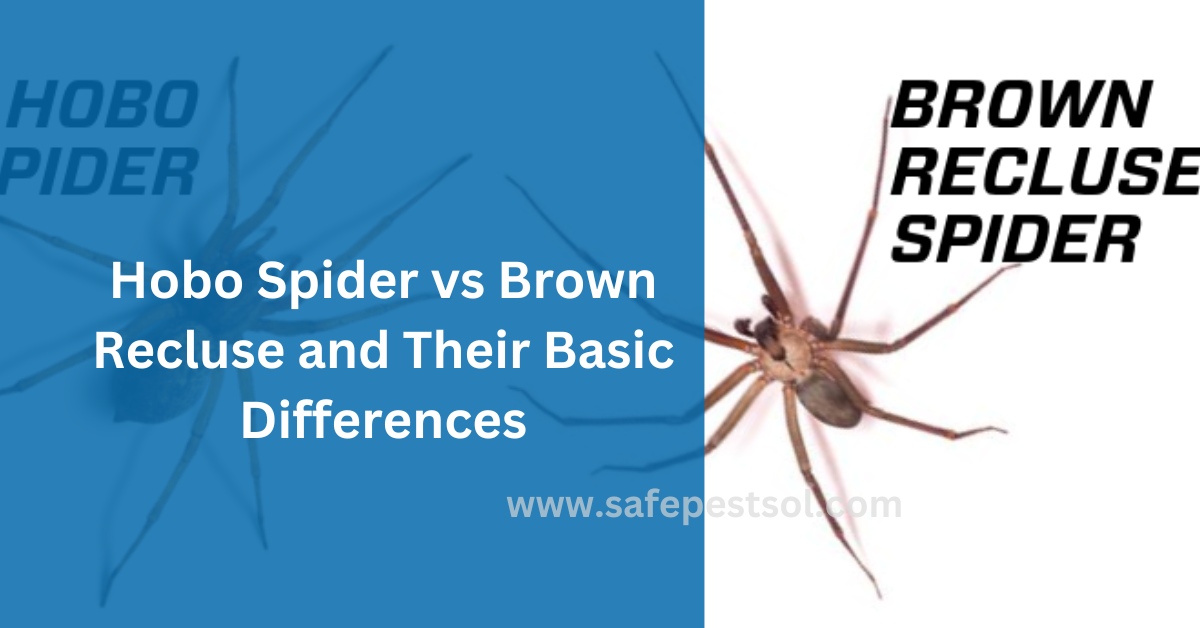Hobo Spiders vs. Brown Recluse Spiders: Everything You Need to Know

Some spiders are scary-looking, and people may get confused between Hobo Spider vs Brown Recluse Spider while comparing them. Most of us consider both spiders poisonous. However, they do differ in several ways.
What are Hobo Spiders?
Hobo spiders are relatively easy to spot because of the webs they create. They form funnel-shaped webs that help trap insects inside. Hobo spiders are mostly found in the northwestern United States, Washington State, and sometimes in Oregon and Idaho.
They are tan or light brown with no specific patterns on their body. They have no special marks or shapes, which makes them look plain compared to other spiders.

They are about 1/2 inch in body length. Most people think hobo spiders are dangerous. But, in reality, their bites are not that harmful.
What are Brown Recluse Spiders?
Brown recluse spiders are also known as brown recluses. These spider species can be identified by the violin-shaped mark on their cephalothorax (the part that connects their head and body).
Brown recluses live mainly in the southern United States, in warm locales such as Texas, Oklahoma, and Alabama. They are pale or dark brown in color and have six eyes, which is unusual for spiders because most spiders have eight eyes.

Hobo Spiders vs. Brown Recluse Spiders: Physical Features
| Feature | Hobo Spiders | Brown Recluse Spiders |
| Color | Plain brown, with no patterns | Brown with a violin-shaped mark |
| Body Length | 0.4 – 0.6 inches | Around 0.5 inches |
| Leg Span | Up to 1.5 inches | Around 1 inch |
| Eyes | 8 eyes arranged in two rows | 6 eyes arranged in three pairs |
| Web Type | Funnel-shaped | No webs; ground-dwelling |
Hobo Spiders vs. Brown Recluse Spiders: What They Eat
Hobo Spiders’ Diet
Sometimes, hobo spiders feed on small insects like flies, ants, beetles, or even cockroaches. Their funnel web catches the insects quickly, which they can eat later. Normally, hobo spiders prefer dark, quiet places such as a basement, garage, or closet.
They wait inside their funnel web and wait for an insect to get close to their web. Hobo spiders do not move around much and typically stay in their web unless they are disturbed or actively seeking some more food.
Brown Recluse Spiders’ Diet
While the diet of brown recluses consists of small insects, they catch their prey in different ways. Brown recluse spiders are efficient hunters who do not rely on webs like the hobo spiders do.
They go out at night and spend most of their daylight hours hidden from others. They can be found in the dark areas of houses, empty boxes, storage spaces, and areas where they can quietly hunt for food.
Hobo Spiders vs. Brown Recluse Spiders: Basic Differences
| Criteria | Hobo Spiders | Brown Recluse Spiders |
| Web Type | Funnel-shaped web | Rarely build webs |
| Habitat | Basements, ground-level areas | Dark, undisturbed spaces |
| Danger Level | Moderate to low | High, with potential tissue damage |
| Bite Symptoms | Mild pain, redness | Severe pain, possible skin necrosis |
| Geographical Range | Pacific Northwest (e.g., Washington State) | Southern and Central United States |
Hobo Spiders vs. Brown Recluse Spiders: Which One is More Dangerous?
Hobo Spiders
Many of us think that Hobo spiders are very dangerous, but it is a myth. In reality, they are not that harmful to us. However, when a hobo spider bites, it may hurt a little, just like a mosquito or cockroach bite, but there is no need to be serious and get feared.
Brown Recluse Spiders
Brown recluse spiders bite can be dangerous. These spiders are venomous, that can swell your skin by biting. You may have to face skin damage, If you don’t get help from doctors immediately. But don’t worry, such situations are rare.
Ways to Get Rid of Hobo Spiders and Brown Recluse Spiders
1. Using Sticky Traps
Both hobo spiders and brown recluse spiders can be managed using sticky traps. They are likely to enter from basements and crawl spaces. Therefore, place traps in such areas. The sticky traps are very effective with house spiders and can trap these spiders when they roam around.
2. Professional Pest Control
For a heavy infestation, it is recommended to seek professional pest control services. These professionals know better how to deal with the hidden recluse and hobo spiders. They can use treatments and tools that are safe for humans and pets.
3. Regular Cleaning and Decluttering
A tidy, organized home can help you stop spiders from getting in. Spiders such as the brown recluse prefer dark locations that are silent, like the garage and storage room. So, cleaning them regularly may keep spider infestations from happening in the home.
4. Sealing Entry Points
Hobo spiders and brown recluses both enter homes through small crevices around windows, doors, and foundation gaps.
Conclusion
When it comes to Hobo Spider vs Brown Recluse Spider, their appearance, behavior, and eating habits are quite unique from each other in some aspects. In general, you won’t get any harm from Hobo Spiders. Dealing with these spiders on your own can be tricky, so it is best to get connected with professionals immediately.
FAQs
1.What are the main differences between hobo spiders and brown recluse spiders?
Hobo spiders are generally found in the Pacific Northwest, have a chevron pattern on their abdomen, and create funnel-shaped webs. Brown recluse spiders are found in the central and southern United States, have a violin-shaped marking, and rarely use webs to catch prey.
2.How can I tell if a spider bite is from a brown recluse?
Brown recluse bites often start as a small red bump but can develop into an open sore with dead tissue in severe cases. Seek medical attention if you suspect a bite from a brown recluse spider.
3.What is the best way to control an infestation of hobo spiders or brown recluse spiders?
Use sticky traps in high-traffic spider areas and consider professional pest control for more severe infestations. Regular cleaning and sealing entry points can also help prevent future spider problems.
From Hobo Spiders to Brown Recluse Spiders, We Got Solution for All!
Whether you are facing spider infestation or want to eliminate any other pest in your home, you will need professionals. In this case, we are here to help you with our years of expertise in pest control services. Get our free pest control estimation today!

